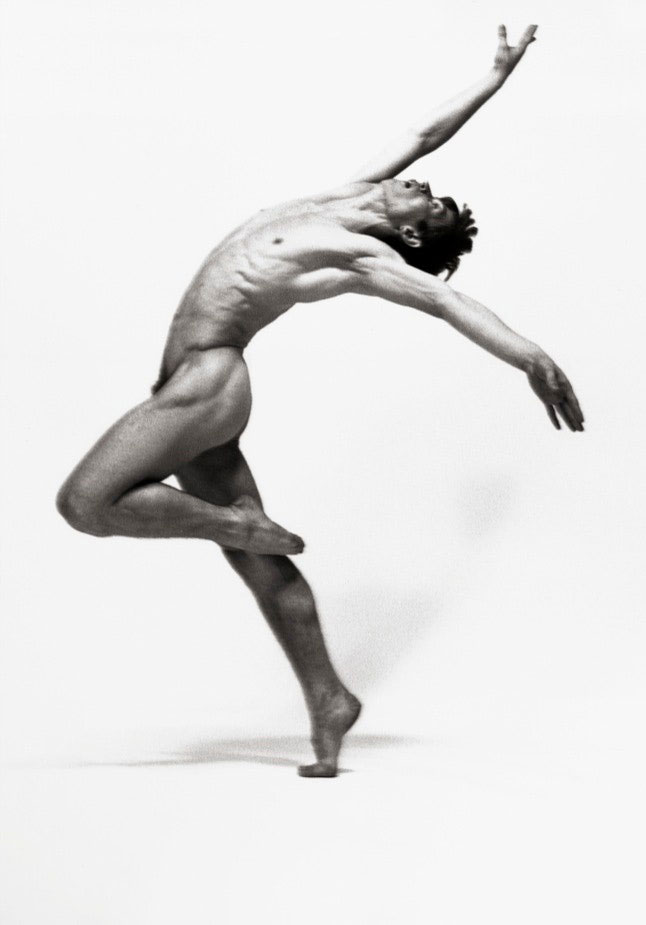DRIES TALKS – The sensuality of expressive Freedom

DRIES TALKS – Rudolf Nureyev: the sensuality of expressive freedom
“If still amongst us, Rudolf Nureyev would have perfectly embodied the soul and spirit of my latest collection. Hence the following lines, as a tribute and source of inspiration.” – Dries Criel
Three decades ago, Rudolf Khametovich Nureyev, better known as Rudolf Nureyev, died. The Russian ballet dancer and choreographer was not only world-famous for his enormous talent and tantalising charisma; he was also a symbol of the inexhaustible power of expressive freedom on and off stage.
Nothing, however, seemed to predispose Rudolf to a life as a world star. He was born the son of Tatar Muslims on 17 March 1938 on a train somewhere near Irkutsk. When he was six, he fell in love with the art of dance and, against his father’s wishes, took folkloric dance lessons. When he turned 17, he was allowed to start at the famous Leningrad ballet school, after which he made his debut as a soloist with the famous Kirov company in 1958.
From east to west
The fact that he was remarkably talented and demonstrated it in completely idiosyncratic ways meant that his reputation as a rebellious prodigy was soon made. When, during an international tour with the company in 1961, he managed to outwit the dreaded KGB at Paris’ Le Bourget airport and seek political asylum in the West, he was instantly world-famous. His decision as an up-and-coming ‘jeune premier’ to leave behind both his friends and family and his career as a top dancer in his austere homeland also caught the imagination outside the dance world.
Having chosen the freedom to be who he wanted to be, young Rudolf was able to immediately join the now disbanded Grand Ballet du Marquis de Cuevas. Later, he also danced for London’s Royal Opera House, where he formed a legendary duo with the famous British ballerina Margot Fonteyn. The ‘cool English Rose’ and the ‘hot-blooded Tatar’ proved to be the perfect match. Their performance reached a level difficult to match, as evidenced, for example, by the famous balcony scene from Prokofiev’s ‘Romeo and Juliet’- one of their most famous pas de deux together. This duet beautifully showcases the two dancers’ ballet technique and dramatic expression.
Tantalising
Rudolf not only danced in London but was also employed by the Wiener Staatsoper for a long time. During the 1980s, he joined the Opéra de Paris, first as a dancer and then as artistic director and choreographer.
Averse to tradition and rigid rules, he was not the first Russian who took Paris by storm with innovative and, above all, highly personalised artistic stage performances. A few decades earlier, choreographer Sergei Diaghelev and painter-costume designer Leon Bakst preceded him. Their vision of the theatre as a sensual place where magic arises from ground-breaking expressive freedom and the corporeal beauty of movement left an indelible mark on the ballet of their time. Diaghelev’s choreographies took the ballet of his time out of the strictures of traditional rhythm; Bakst’s graceful and often unapologetically sensual costumes allowed the dancers’ corporeal power to pour out.
Like his compatriots, Nureyev, in his typical flamboyant style, hardly allowed himself to be constrained by the establishment and existing traditions. He often drew all the attention to himself in the process, whereas until then that honour had usually fallen to the prima ballerinas. “His gaze held the audience. He sought and found meaning in movement, in expression and in the eyes,” star dancer Florence Clerc, who worked with him, once said in an interview.
As a choreographer, he was the first in the history of classical dance to allocate an important place to male dancers. His dramatic presence, charisma and grace exemplified a new generation of young dancers in a mesmerising blend of masculine power and feminine elegance.
Dancing is life
Rudolf Nureyev enjoyed the status of a rock star, which is exceptional for a dancer, and both him and his career served as the starting point for several biographies, novels, documentaries, films and plays, including Ralph Fiennes’ “The White Crow” and, most recently, Dutchman Jan Kooijman’s “Nureyev”, which is still on tour in several Dutch theatres until the end of May. The latter piece is a retrospective by the 54-year-old dancer who attended the dress rehearsal of his last ballet – La Bayadère – at the end of his life and wanted to get one last round of applause. The greatest tribute, however, remains the magnificent final scene in Claude Lelouch’s 1981 ‘Les Uns et les Autres’, in which Jorge Donn dances to Ravel’s Bolero by way of a riveting apotheosis in an obsessive ode to the circle of life in all its facets. As a spectator, even in 2023, you can only admire and be mesmerised, waiting by way of catharsis for the inescapable climax.
Music and dance would define Nureyev’s life until the end. “As long as you dance, you’re alive,” he used to say. That drive for unhindered movement was what decorator Ezio Frigerio, with whom he often worked, had in mind when designing the incredible tomb in the Russian cemetery of Sainte-Geneviève-des-Bois where Rudolf Nureyev has been buried with his dancing shoes since his death in 1993. That is entirely lined with a mosaic in the form of a beautiful Oriental carpet that seems loosely draped over the suitcases of his journeys and accompanying stories. The illusion of dynamism and energy seems intact even when the last notes died away.

